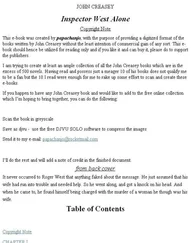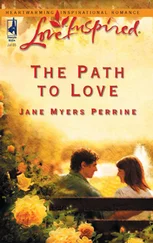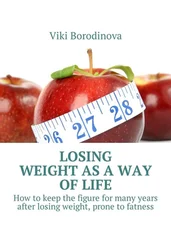Thanks to protruding teeth (later straightened) and a flat chest, Vivienne did not judge herself to be pretty, though she anticipated that ‘I was going to be.’ Perhaps her lack of self-confidence was a result of having a pretty and vain mother. Seeing that Dora was always well turned-out, and the impact that had on her father, gave Vivienne an early belief in the power of beauty and clothes. She determined to make something of herself through her clothing. She would come home from school with a piece of material, cut out a dress, sew it up and wear it that night. At school she wore one coloured stocking and one plain one with her uniform, which she had customised by tightening the skirt round her haunches and cutting a provocative slit up the back. She started padding her bras, longing for the sexuality of a curvaceous female form – ‘big tits are what boys are interested in’. Her idols were the hourglass-shaped Sophia Loren, Marilyn Monroe and Jayne Mansfield. The clothes she later designed would challenge sports-honed skinniness with a voluptuousness enhanced by corsets and high heels. She also took to curling her hair, leaving the curls so stiff that it looked as if the rollers had not been removed.
In 1957 Vivienne and a schoolfriend, Maureen Purcell, went for a holiday at Butlin’s camp in Skegness, a popular working-class resort. The camp had a libertine atmosphere, and many young boys would work there as ‘Redcoats’ for ridiculously low wages, in the virtual certainty of sexual encounters with female campers. The holiday opened Vivienne’s eyes to the sexiness of shoes: ‘There were these Essex girls who were really stylish and wore stilettos. In Manchester I saw these amazing high-heeled stilettos in a shop window and I bought a pair … I wore them to school with a tight-fitting pencil skirt,’ much to her headmistress, Dolly Greenwood’s, dismay. Maureen Purcell recalled that when Vivienne stayed overnight on the family sofa ‘she’d bring a collection of her winklepickers and line them up near the skirting board’. ‘Clothes make you the centre of attention,’ Vivienne said in 1995. ‘It’s like when I was a girl, I thought the difference between jive and rock ’n’ roll was that you stuck your bottom out, so I would stick it right out and the boys would really laugh at me. But I didn’t mind because I thought, OK, I know what I’m doing.’
Vivienne reached adolescence in the mid-1950s, right at the beginning of a dramatic social change – the emergence of the teenager. The urban, middle-class teenage girl disdained adult fashion, preferring casual dress that reflected her own age and musical interests, such as separates inspired by Italian fashion, and full cotton skirts and bobby socks from America. Vivienne, though, was born into the conservative provincial working class, which valued the smartness, ‘good taste’ and hauteur of its social superiors. Retaining the romanticism of the New Look and its glamorous Hollywood exaggerations, a fashion-conscious adolescent from this background would have aspired to the image of an elegant and well-married thirty-year-old woman in neat dress or suit and matching accessories. (One contemporary marvelled at how Vivienne was ‘so smartly turned out … it was always the complete outfit, the shoes, the bag always matched’.) She would have been unlikely to risk looking casual, which might give the impression of poverty.
Her sartorial icons were the aristocratic mannequins who graced the pages of the upmarket glossy magazines like Vogue, Harper’s Bazaar and Vanity Fair , such as Barbara Goalen, Fiona Campbell Walter (later Baroness von Thyssen) and Bronwen Pugh (later Lady Astor), and Hollywood stars like Lana Turner, Marilyn Monroe, Jane Russell, Elizabeth Taylor, Grace Kelly and Audrey Hepburn. The big American film studios spared no expense in the grooming and marketing of these female icons, employing the considerable creative skills of costumiers such as Edith Head, William Travilla and Orry-Kelly, and French couturiers such as Christian Dior, Pierre Balmain and the Paris-based Elsa Schiaparelli. The celluloid goddesses reached Vivienne and her friends through the cinema in Glossop, which they typically visited once a week.
Wherever she went, even to school, Vivienne aimed to dress like a woman, not a girl; she ‘could not think of anything more exciting’, and was convinced she looked better than anyone else – ‘a sensation’. The first items of clothing she chose for herself were a fashionably tight pencil skirt, which she later described as ‘so sexual’, and a pair of high-heeled shoes. She experimented with her image, dying her hair red one week and bleaching a badger streak in it the next. Her mother recalled that ‘even at sixteen she would wear unusual clothes’. In an effort to attract attention, when the fashion for delicate daisy earrings hit Glossop, Vivienne made a pair out of huge marguerites. She was thrilled when, as she entered the dance hall, the trombonist took his instrument from his lips, pointed at her and hissed, ‘Look at that girl!’ On another occasion, when the other girls were wearing net petticoats, stiffened with sugar, under full skirts, ‘she came in a slinky black Suzy Wong dress that she had made – but then, she could carry it off.’
Keenly aware of the limitations of her background, Vivienne determined to elevate herself above it. Quite unfairly, she later boasted: ‘I am very happy that I didn’t need my family. They were not sceptical or questioning enough for me – too conforming.’ Despite her apparent self-confidence, she felt she was ‘stupid … I thought that nobody around me had enough information to give me.’ This conviction never left her, and to it one can perhaps trace her intellectual insecurity and her drive to seek out – usually male – mentors.
Aways alert to an opportunity, at grammar school Vivienne selected as her best friend Maureen Purcell, who came from a slightly higher social level – her family owned the Glossop general store just off the main square. During lunch break the two teenagers would look for sheet music in the town, going back to the Purcells’ to sing along to the hits they played on Mrs Purcell’s record-player. After school, if she did not take the bus straight home to the dull village of Tintwistle, Vivienne could loiter at the Purcells’ or join friends, such as Anne Shaw, and the boys in the café in Glossop. Her mother did not like her to be out late, so she began to stay over at the Purcells’, which she still describes as being ‘like a second home to me’.
Maureen Purcell was Jewish, which distinguished her from most of her classmates, and she possessed ‘a much stronger personality than Vivienne’. Looking at photographs of the two friends in their mid-teens, it is striking how knowing and slickly-turned-out they are compared to their contemporaries; any vestige of innocence is artfully disguised. According to Eileen Mellish, ‘the boys thought a lot of Vivienne – she was great fun to be with.’ Their confidence probably stemmed from their relative worldliness. The Swires and the Purcells allowed their daughters to go to Manchester on Saturdays to shop or visit the dance halls, something which, Eileen Mellish remembers emphatically, ‘my parents wouldn’t let me do, full stop!’ The two girls were even permitted to go for a holiday at Butlin’s; Vivienne claimed that she ‘got off with over a hundred blokes’.
In the pre-Profumo era, when moral standards were strict and social ordering was precise, the two girls’ antics might have been expected to invite comment. However, it was often the case that the working classes were less hidebound by propriety than the ‘respectable’ and aspiring middle classes. Furthermore, there was in some urban Jewish circles a progressive, tolerant and playful spirit. Frequenting such circles in Manchester, where some of Maureen’s relatives were in the tailoring business – and where both of her parents had worked as machinists in a clothes factory in the thirties – would have given Vivienne a glimpse of glamour. As a contemporary saying (at least among Mancunians) asserted, ‘What Manchester thinks today, London thinks tomorrow,’ and the city’s King Street was proudly claimed to be ‘the Bond street of the North’. Vivienne and Maureen also socialised with the Purcells’ cousins, the McCofskis, who were Jewish tailors in Leeds.
Читать дальше












